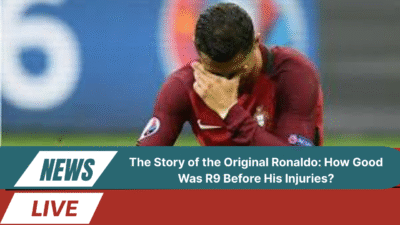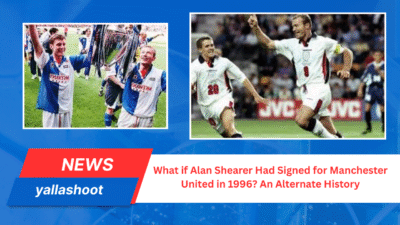What makes the Everton vs Liverpool Rivalry so unique among football clashes in England? Why does the Dockers Derby, also known as the Merseyside Derby, hold such a powerful place in football history? And how did this rivalry evolve into one of the most iconic showdowns the sport has ever seen?
The answers lie deep within the city of Liverpool, a place where football is more than just a game but a cultural heartbeat. Generations of families have been split by colors of blue and red, yet united by passion for the same city. Unlike many rivalries fueled purely by hostility, this one grew out of shared neighborhoods, shared hardships, and unforgettable moments on the pitch.
From the origins of the Dockers Derby to its reputation as the so-called “friendly derby,” this rivalry has shaped English football and left a legacy that transcends sport. To understand why this historic matchup is celebrated worldwide, you must dive into the full story of its beginnings, its most dramatic moments, and the community spirit that continues to define it today. For a deeper look at how it ranks among other Premier League rivalries, let’s explore its fascinating journey.

Origins of the Merseyside Derby
Early Roots of Football in Liverpool
Football found fertile ground in Liverpool during the late 19th century. The city’s dock workers, shipbuilders, and industrial communities quickly embraced the sport as a source of pride and unity. Everton, originally the dominant force, became a founding member of the Football League in 1888.
The Split that Created Two Giants
In 1892, disputes over stadium ownership and financial disagreements led to a historic split. Everton left Anfield, and Liverpool Football Club was born. What began as a business conflict grew into one of football’s most enduring rivalries.
Why the Derby Became Known as the Friendly Derby
Shared Communities and Families
Unlike other rivalries, the Merseyside Derby earned the nickname “friendly derby” because fans often came from the same families. It wasn’t unusual for brothers, fathers, and sons to support opposite sides while sitting together in the same stands.
Unity in Tragedy and Football Spirit
Moments like the Hillsborough disaster in 1989 revealed the unity between both clubs. Everton and Liverpool supporters came together to mourn, showing that football rivalries can pause when human values take center stage.
Key Historical Moments in the Rivalry
Classic Matches that Defined the Derby
1984 League Cup Final: A hard-fought draw at Wembley highlighted the closeness of the two clubs.
1989 FA Cup Final: Liverpool beat Everton 3–2 in one of the most emotional matches after Hillsborough.
2020 Premier League Clash: Everton’s rare win at Anfield marked a turning point in the modern rivalry.
Legendary Goals and Iconic Players
Players like Ian Rush, Steven Gerrard, Dixie Dean, and Tim Cahill became symbols of this rivalry, etching unforgettable goals into the memories of fans.
Derby Stats and Numbers that Tell the Story
Wins, Losses, and Draws
Liverpool leads the all-time head-to-head record.
Everton, however, remains proud of its early dominance.
The Derby is among the most played fixtures in English top-flight history.
Records and Milestones
Most red cards in Premier League history.
Dixie Dean remains one of Everton’s all-time greats in derby history.
Steven Gerrard’s goals made him a legend in this fixture.
Biggest Rivalries in England: Where Everton vs Liverpool Stands
The Merseyside Derby ranks alongside the Manchester Derby and Arsenal vs Tottenham as one of the biggest rivalries in England. While United vs City is about global prestige and Arsenal vs Spurs is about local pride, Everton vs Liverpool blends both—local loyalty with worldwide attention. More insights are available in this football rivalries guide.
Cultural and Social Impact of the Rivalry
Music, Politics, and Community
Liverpool’s strong cultural identity, from The Beatles to its political history, influenced the atmosphere of the derby. Songs, chants, and banners often reflect the character of the city itself.
Global Recognition and Media Coverage
The Merseyside Derby attracts millions of viewers worldwide, cementing its place as one of the most-watched fixtures globally. Articles like this Premier League derby spotlight highlight its global impact.
Modern Era: How the Rivalry Continues Today
Premier League Era Highlights
From thrilling comebacks to controversial refereeing decisions, the Dockers Derby continues to deliver drama each season.
Recent Shifts in Power
Liverpool’s resurgence under Jürgen Klopp has widened the gap, yet Everton’s victories remain powerful reminders of their resilience.
Future of the Dockers Derby
Young Talents and the Next Generation
With emerging stars from both clubs, the future promises more intense battles.
Will the Friendly Spirit Survive
In an era of commercialization, fans wonder if the derby will retain its traditional community feel.

FAQs
Q1: Why is it called the Dockers Derby?
Because the rivalry grew from Liverpool’s dock-working communities, where football was central to working-class life.
Q2: Why is it known as the Friendly Derby?
Because families in Liverpool often support both clubs, making the rivalry passionate yet uniquely respectful.
Q3: Which team has more wins in the Merseyside Derby?
Liverpool leads the overall head-to-head record.
Q4: What are the most memorable matches in this rivalry?
The 1989 FA Cup Final and Everton’s 2020 victory at Anfield are among the most iconic.
Q5: Where can I read more about Premier League rivalries?
You can explore detailed coverage in this guide on rivalries.
Conclusion
The Everton vs Liverpool Rivalry is not just about goals or trophies—it’s about identity, family, and culture. The Dockers Derby embodies the spirit of Liverpool itself, balancing fierce competition with shared values. Its history, its unforgettable matches, and its future promise ensure it will remain one of the most celebrated rivalries in world football.










